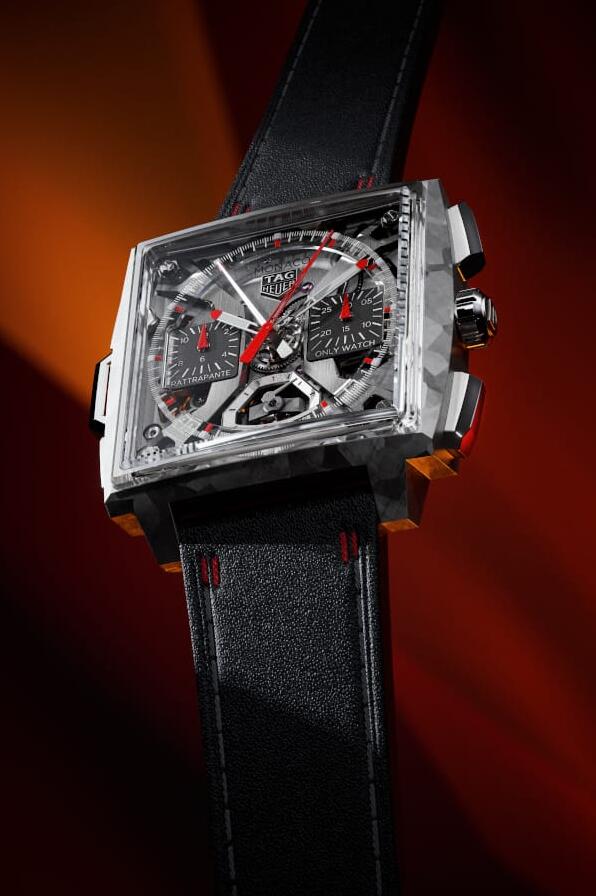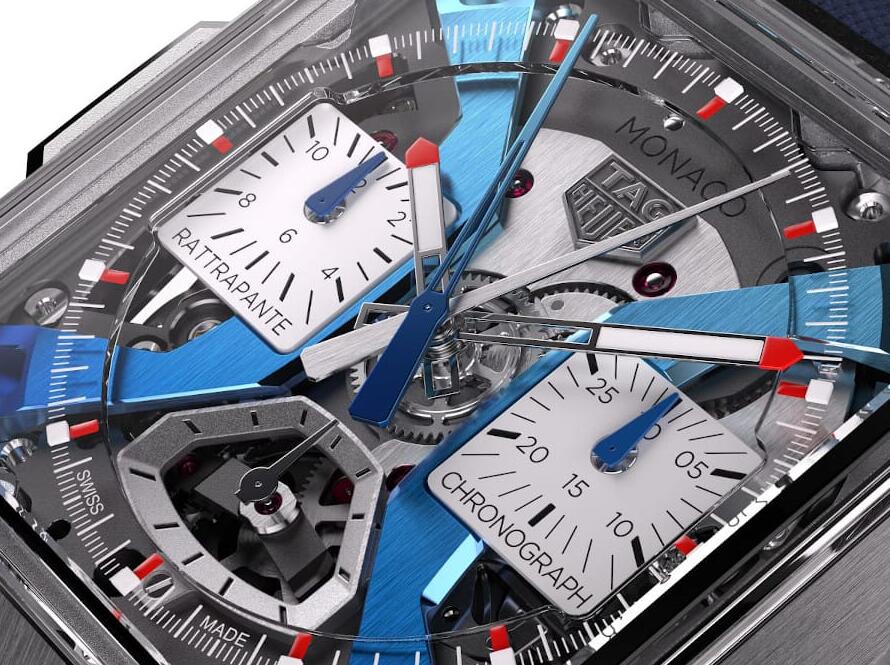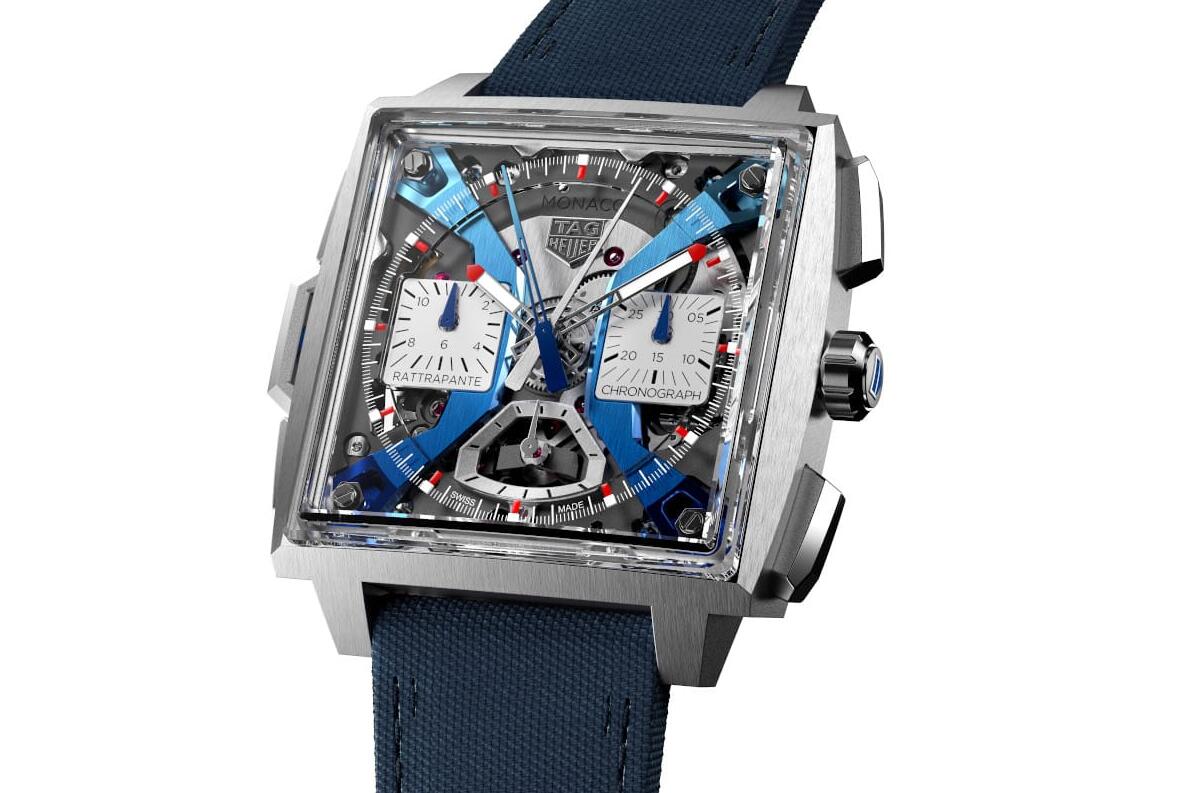Introduction
The new Tag Heuer Replica watches presented at Watches and Wonders confirm the brand’s growth aspirations and the importance of the chronograph complication within the offer.
The latest edition of the Carrera presented last year (on the occasion of the sixtieth anniversary) received excellent feedback from enthusiasts and the specialized press and it is on this basis that Tag Heuer has built the new products of this edition of the show.
At the same time, the splendid one-of-a-kind split-seconds chronograph dedicated to the Only Watch charity auction has its heir in the collection, as many of us hoped. The Monaco split-seconds chronograph enters stable production, retaining everything or almost everything of the “one-off” model.
Monaco Split-seconds chronograph
Let’s start with the flagship model, the Split-second chronograph, with which Tag Heuer promises to “rekindle avant-garde haute horlogerie” as announced in a claim on the official website.
The watch features everything we love about the one-of-a-kind model, except for the “texturized” titanium case, which has been replaced here with a Grade 5 titanium alloy. The watch offered for the charity auction was, after all, a final, production model.


The brand’s chronograph tradition needs no introduction, considering TAG Heuer’s immense pedigree in sports timekeeping that includes a dedicated division and has given us several examples of excellence in this field.
To cite an example of the combination of mechanical and digital technology, we cannot fail to mention watches such as the Monaco Sixty-Nine, whose article is widely read and full of comments, in which the mechanical module is combined with a digital Micro-timer module.
Case and dial
The watch has a declared weight of 85 grams, confirming the goal of creating a complicated watch with haute horlogerie characteristics, unbalanced towards lightweight materials and pure innovation.
TAG Heuer has repeatedly explored pure innovation, we remember the Monaco 24 collection, but this execution raises the bar decidedly high and introduces a new stylistic language that is very pleasant and absolutely faithful to the spirit of the current TAG Heuer Monaco as much as the original model from 1969.

The dimensions indicate a 41 mm case, intrinsically Monaco from every angle, which respects the sensations of the original 1969 model. The watch is 15.2 mm thick overall but the ultra-light construction mitigates its bulk. The two vintage-style counters, silver or black depending on the versions presented, are also a clear reference to the origins. It should be remembered that the Monaco is 55 years old.
The case is full of edges, polished and brushed surfaces, and identifies a Monaco version 2.0 which, we hope, will soon give life to a new Monaco collection, parallel to the current collection.


Excluding the two counters, the watch celebrates performance and motorsport, using skeletonization to enhance the double chronograph characteristics. The dial is made of sapphire crystal, houses the flange and is paired with the counters. It offers a direct view of the movement, from which it is separated by a pair of titanium arches. The case back is also made of sapphire crystal.
The double X bridge
Their color varies depending on the version. The bridges are made of titanium in two shades of blue, each, on the titanium alloy model and vaguely recall the palette of the Gulf model. They are instead treated with black DLC on the Racing Red version, like the case.

The X-bars arranged on the engines of rear-engined cars are in our opinion the source of inspiration and, as you can see from the photo below, in the case of the watch they wrap around the two chrono counters: RATTRAPANTE on the left, CHRONOGRAPH on the right. The two counters are therefore recessed while the rehaut is arranged on a raised plane.
It is an aesthetic and functional arrangement: it increases the depth by inviting you to take a journey from the outside to the inside of the watch and helps to identify the different information available, arranging them on multiple levels.

Technology also offers space for classic decoration through the use of lacquer. It is blue on the crown and hands of the two chronograph registers; in red on the indexes of the flange and the tips of the hour and minute hands.
